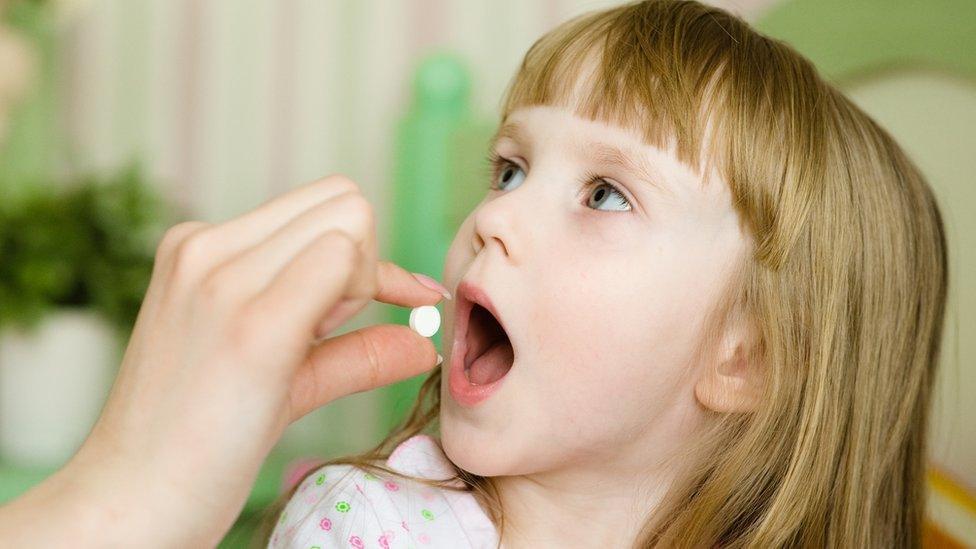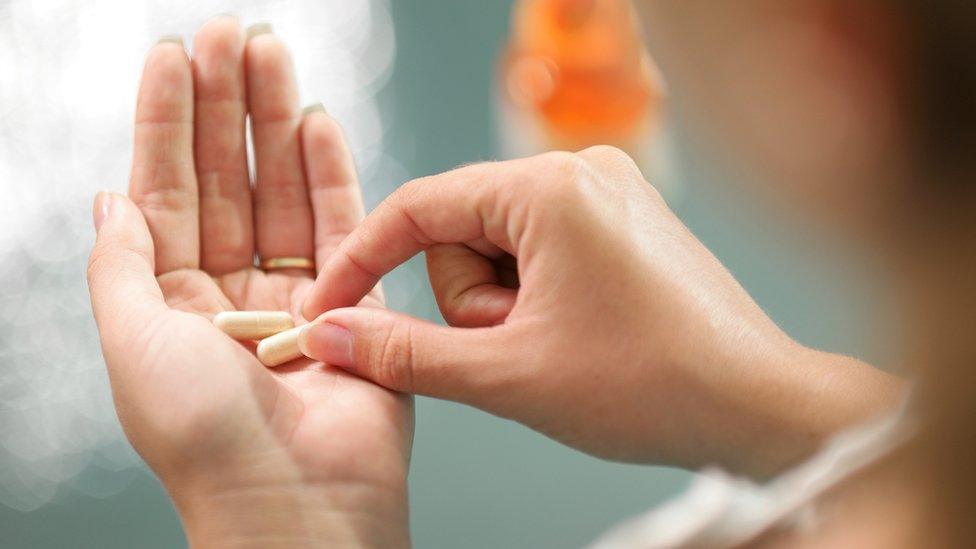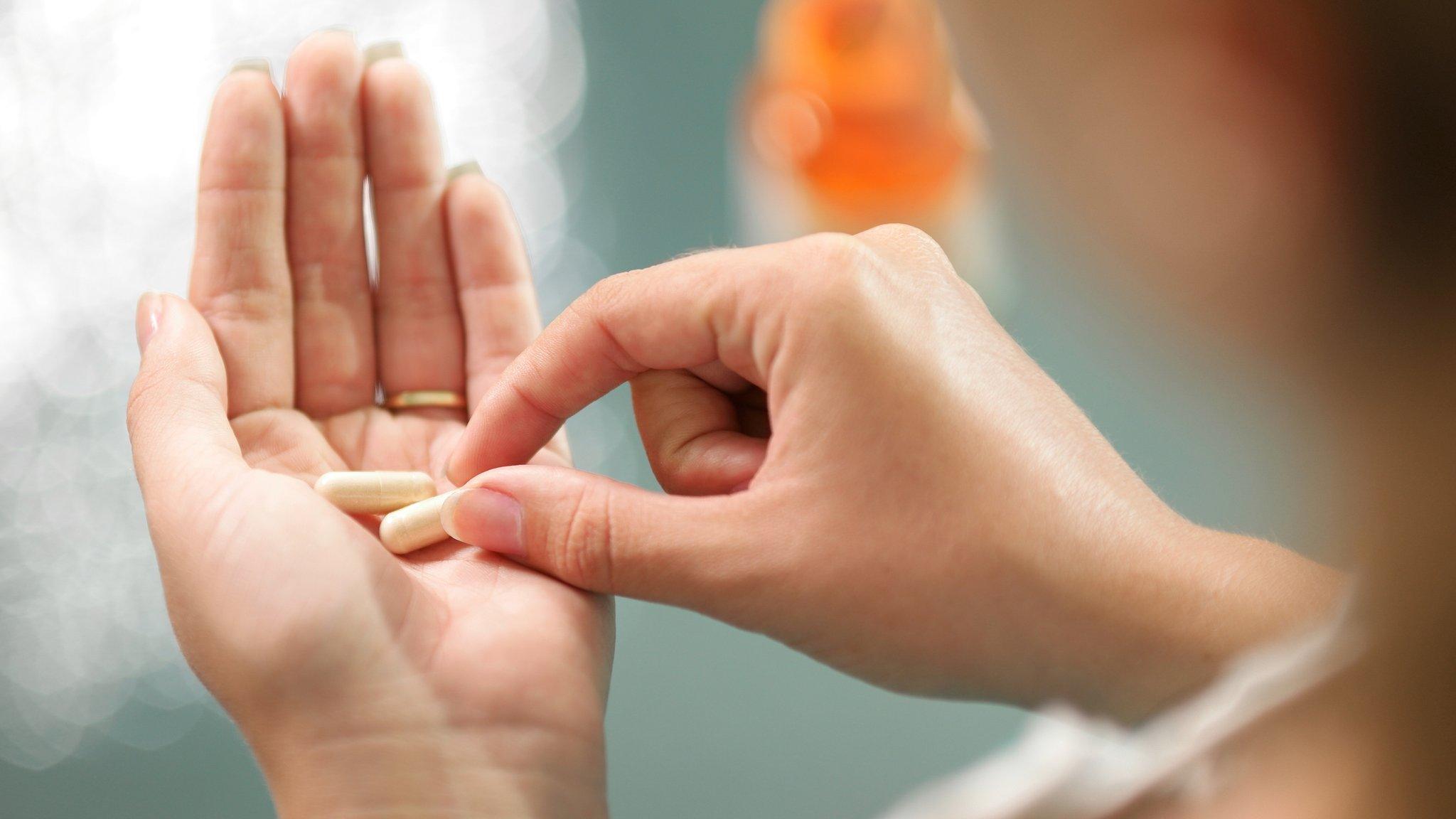Child supplements 'mislead parents' over vitamin D
- Published
- comments

Few children's multivitamins give the recommended daily vitamin D dose, a study suggests.
Researchers from the universities of Oxford and Southampton looked at 64 multivitamins and found only 25%-36% provided the correct dose of 400 IU.
The Royal College of Paediatrics and Child Health (RCPCH) said the research was "highly concerning" and products were "misleading parents".
They recommend checking the dosage on the labelling of supplements.
Vitamin D is important to prevent rickets in children, which affects bone growth and can lead to deformities.
The main source of vitamin D is sunshine but it is hard to get enough in the UK in autumn and winter.
Cases of rickets in the UK have increased in recent years.
And in 2016 Public Health England recommended a daily supplement of 400 IU (international unit) (10 micrograms) of vitamin D for:
Black and Asian people
children aged one to four
babies under the age of one not getting vitamin D through formula milk
people whose skin has little exposure to the Sun
everyone else in autumn and winter
The researchers looked at multivitamins and vitamin D supplements marketed at children aged under 12 and sold at Asda, Morrisons, Ocado, Sainsbury's, Tesco, Boots, Holland and Barrett, Lloyds Pharmacy and Superdrug and found:
Among the 67 multivitamin products, the daily vitamin D dose ranged from zero to 800 IU
Only one multivitamin was suitable for use from birth - and this supplied 200 IU per day
For children aged under six months, only one multivitamin contained more than 340 IU
Among the 24 specific vitamin-D products and vitamins marketed as being for healthy bones, the vitamin D content ranged from 50 to 1,000 IU
Six products of these were suitable from birth, of which five contained 340 to 400 IU per day - the recommended amount
Writing in the Archives of Disease in Childhood journal, external, the authors said: "Multivitamins typically had lower vitamin D content than pure vitamin D supplements or 'healthy bones' products, although some products labelled as 'for bones' contained very low levels of vitamin D."
To obtain the correct dose, they said, children "would either have to take over the recommended dose, which may increase the risk of toxicity from the other components, or they would have to take a combination of vitamin D and multivitamins, which is more expensive".
Vitamin D supplements are provided free to low income families on the government's Healthy Start scheme. But the researchers found the vitamins provided by the scheme gave only 300 IU per day of vitamin D.

Dr Benjamin Jacobs, from the Royal College of Paediatrics and Child Health (RCPCH), said: "A normal healthy UK diet provides less than 10% of the recommended amount of vitamin D.
"To learn that so many products fail to provide children with the recommended level of Vitamin D is highly concerning, especially when latest evidence shows our children's average intake are still below the recommended amount.
"These products are misleading parents who think they are protecting their children from serious conditions such as rickets, poor growth and muscle weakness.
"I would advise all parents to check that the supplements they use contain the recommended 400 units of vitamin D and consult their pharmacist if they are unsure."
He also said the government should seriously consider fortifying some foods and milk with Vitamin D.
Dr Carrie Ruxton, from the industry-funded health and food supplements information service (HSIS), said: "Food supplements are meant to supplement the diet, not replace the nutrients obtained from foods.
"In that respect, and since there are varying recommendations across different age groups of children, it is right that different supplements offer different doses.
"Smaller doses allow parents to use the same product for younger and older children by varying the amount given.
"Many of the supplements in this survey would actually bridge the dietary gap topping up intake towards the recommended 10 microgram daily."
- Published5 October 2018

- Published16 February 2017

- Published21 July 2016

- Published21 July 2016
